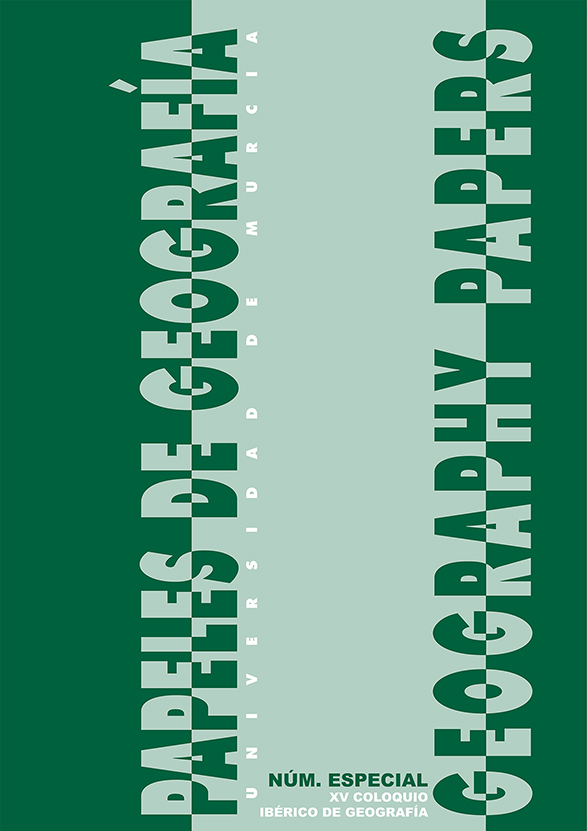Ebola 2013/2016 outbreak and the spatial multidimensionality on medicine innovation
Supporting Agencies
- Centro de Estudos de Geografia e Ordenamento do Território (CEGOT)
Abstract
Between 2013 and 2016, the world experienced the largest Ebola epidemiological crisis ever recorded, totaling more than 28,600 cases, with more than 11,000 deaths.Initially focused on forest areas in the interior of Guinea, the epidemic spread rapidly to different West African countries and for the first time recorded cases outside the African continent. This article aims to identify different dimensions that are projected in a context of Public Health Emergency of International Concern from an analytical approach on the last great outbreak of Ebola, going beyond the biomedical features in an epidemiological scenario.It highlights political and technological subjects that indicate relevant geography fields that are able to develop quickly and that give effective answers for future crisis.Downloads
-
Abstract306
-
PDF (Español (España))208
-
PDF208
References
AYRES JRCM, FRANÇA I, JUNQUEIRA G, SALETTI HC. (2009) O conceito de vulnerabilidade e as práticas em Saúde. Novas perspectivas e desafios. In: Czeresnia D, Machado C, organizadores. Promoção da Saúde: conceitos, reflexões, tendências. 2a ed. Rio de Janeiro: Fiocruz. p. 121-43.
BINZ, C., TRUFFER, B., & COENEN, L. (2014). Why space matters in technological innovation systems - mapping global knowledge dynamics of membrane bioreactor technology. Research Policy, 43, 138-155.
GUIMARÃES, R. B. (2015). Saúde: fundamentos de Geografia humana. São Paulo.
HAGGETT, P. (2000). The Geographical Structure of Epidemics United States: Oxford University Press.
HDX, H. (2016). EVD Cases by district.
MALAGÓN-OVIEDO RA, CZERESNIA D. (2015) The concept of vulnerability and its biosocial nature. Interface (Botucatu). 19(53):237-49.
MÉNDEZ, R. (1997). Geografía Económica - La lógica espacial del capitalismo global (Ariel Ed. 1 ed.). Barcelona.
MSF. (2015). Pushed to the Limit and Beyond. A year into the largest ever Ebola outbreak.: Médicos Sem Fronteira.
SHEPPARD, E., CLARK, G., FELDMAN, M., & GERTLER, M. (2000). Geography or economics? Conceptions of space, time, interdependence, and agency. The Oxford handbook of economic geography, 99-119.
UN. (2014a). Ebola: WHO-convened ethics panel endorses use of experimental drugs, UN News Centre. Retrieved from http://www.un.org/apps/news/story.asp?NewsID=48468#.V1FWg5ErLIV
UN. (2014b). Measures to contain and combat the recent Ebola outbreak in West Africa (pp. 2): UN General Assembly.
UN. (2014c). Resolution 2177 (2014) (pp. 5): UN Security Council.
UN. (2015). Resources for Results V: United Nations.
WHO, W. H. O. (2014). Statement on the 1st meeting of the IHR Emergency Committee on the 2014 Ebola outbreak in West Africa. Junho/2016, from http://www.who.int/mediacentre/news/statements/2014/ebola-20140808/en/
WHO, W. H. O. (2016a). EBOLA Response Funding. Retrieved Junho/2016, from http://www.who.int/csr/disease/ebola/funding/en/
WHO, W. H. O. (2016b). Emergencies preparedness, response: Ebola Maps. Retrieved junho/2016, from http://www.who.int/csr/disease/ebola/maps/en/
The manuscripts published in Papeles de Geografía are subject to the following terms and conditions:
1. The publishing house of the University of Murcia (Servicio de Publicaciones de la Universidad de Murcia) keeps the copyright of the published manuscripts favouring and allowing the use and distribution of such works under the licence in 2 below.
© Servicio de Publicaciones, Universidad de Murcia, 2011
2. Manuscripts are published electronically under an Attribution Non-Commercial No Derivatives 3.0 Unported Creative Commons Licence Spain (Legal text). Readers are free to copy, use, share and redistribute the material in any medium or format as long as (i) appropriate credit is given to authors and original source (journal, publishing house and URL); (ii) the material is not used for commercial purposes and (iii) this licence and restrictions are stated.
3. Self-archive. Authors are allowed and encouraged to distribute pre-print versions (prior to evaluation) and/or post-print versions (after evaluation and accepted for publication) of their manuscripts. This favours the dissemination and early distribution of scientific knowledge and citing.





